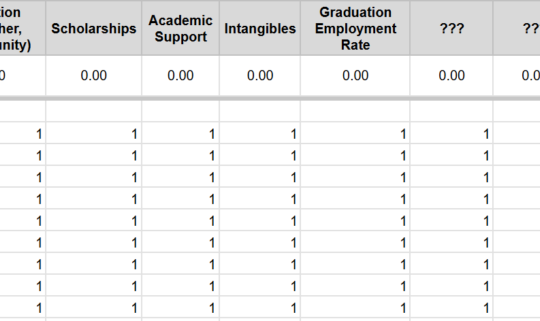As a continuation of Paying for College/Trade School post (I understand this is early but fits following Paying for College – Scholarships), it is time to write about the Free Application for Federal Student Aid (FAFSA) is the form required to apply for financial aid from the federal government for college expenses. Annually, more than 13 million students who submit the FAFSA receive upwards of $120 billion in grants, work-study funds, and low-interest loans from the U.S. Department of Education.
Additionally, many states and colleges use the FAFSA to decide which students qualify for financial aid and the amount they will receive.
The FAFSA requires details about your and your family’s financial situation, including tax returns, which may necessitate your parents’ assistance to fill out. Should you require further assistance, it’s advisable to contact your school counselor.
Facts:
- Submitting the FAFSA is crucial for those seeking financial aid.
- The FAFSA is free, and there’s no need to pay for its preparation.
- A new FAFSA must be submitted for each academic year to receive aid. If you’re applying for aid throughout college, you must fill out the FAFSA annually.
- Ensure you use a permanent email address, not your high school email, for your FAFSA account.
- The FAFSA has completed a simplification and redesign in the fall of 2023 to ease the application process for federal student aid.
- The Department of Education has announced that the application will be initially available to a limited number of students in October 2024 and fully accessible to all students early in December.
To be eligible for FAFSA, you need to meet several requirements:
- Citizenship or Eligible Noncitizen Status: You must be a U.S. citizen or an eligible noncitizen, such as a permanent resident.
- High School Diploma or Equivalency: You need to have (seniors graduating in May/June are golden) a high school diploma or a General Educational Development (GED) certificate.
- Enrollment in an Eligible Program: You must be enrolled or accepted for enrollment in an eligible degree or certificate program.
- Satisfactory Academic Progress: You need to maintain satisfactory academic progress in college or career school.
- Social Security Number: You must have a valid Social Security number (with some exceptions for students from the Freely Associated States).
Who Should Fill Out the Application?
Anyone planning on going to college or trade school in the next academic year should fill out the FAFSA.
Here’s why:
- Annually, millions—or even billions—of dollars in federal aid go unclaimed by students who fail to file a FAFSA. The rule is straightforward: no FAFSA, no eligibility for most types of financial aid.
- Income level is not a strict barrier for aid; families earning up to $200,000 annually may still qualify for assistance.
- Submitting a FAFSA automatically makes you eligible for low-interest federal loans, which are typically more affordable than private student loans.
- Furthermore, many work-study opportunities necessitate a completed FAFSA.
- Additionally, some merit-based scholarships use the FAFSA to determine the amount of scholarship to award.
- If there is a significant parent income loss, a student could ask the universities financial aid department to re-evaluate their FAFSA.
Experience with “new” FAFSA
Last year, the FAFSA underwent a complete rewrite and simplification. However, this process was not without its challenges, such as delayed application openings, database errors, and delays in processing when students made errors (such as failing to sign the application electronically). These issues impacted universities, parents, and students, leading to last-minute decisions regarding financial aid packets and potentially preventing students from attending their university of choice.
Given that the Department of Education has announced a delay until early December, it’s likely that, based on last years’ experience, there could be issues with receiving financial aid packets from universities. Should any problems arise with the FAFSA application, further delays may occur. It is crucial to complete your application meticulously, as electronic signatures were a significant issue the previous year.
It’s crucial to obtain your FSA ID promptly. Parents and guardians should also ensure they have their FSA IDs. Complete your FAFSA as soon as possible, ensuring no critical information or signatures are omitted.








[…] Completing the FAFSA can provide several benefits if you qualify, such as grants, federal work-study opportunities, and government student loans. Additionally, if you demonstrate financial need, you may become eligible for a wider array of scholarships. […]
[…] “free money” and are available at national, local, and college-specific levels. The Free Application for Federal Student Aid (FAFSA) provides financial aid based on a family’s financial status, including grants, federal […]
[…] earlier the better! It helps get your paying for college affairs in order […]